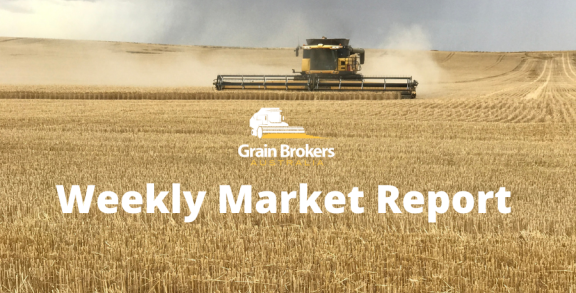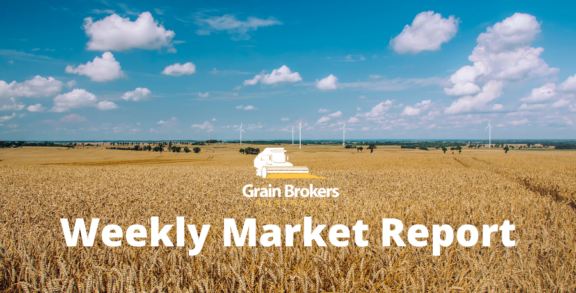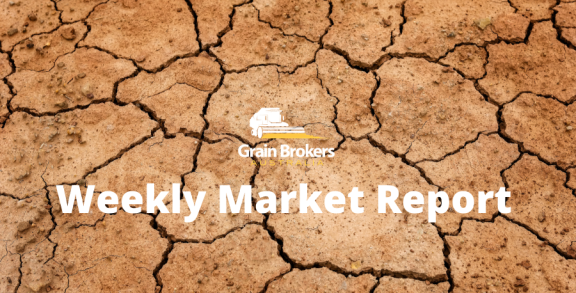
Yield forecasts for the European Union’s 2024 winter crop harvest remain above the five-year average despite the extremely challenging season. Above-normal rainfall across much of western Europe and parts of Scandinavia resulted in delays to the planting campaign last autumn, waterlogging during the growing season, and high pest pressure in a number of regions.
According to The European Commission’s latest JRC MARS Bulletin released on May 27, temperatures through April and most of May were warmer than usual across almost the entire European continent. However, a cold spell swept through in late April, bringing frost to some regions. Southern and eastern Germany, the northern reaches of the Czech Republic and western Poland were the worst affected. Field reports suggest that cereal crops avoided serious damage, with the impact primarily limited to flowering rapeseed crops.
April and May saw a continuation of the wet weather pattern, with many regions receiving more than double their long-term average rainfall. Abnormally high rainfall was observed in eastern France, extending through parts of the Benelux countries (Belgium, the Netherlands and Luxembourg), western Germany, and up into Denmark. The north of Italy and the Black Sea coastal regions of Romania and Bulgaria were also extremely wet. Torrential rain and flooding hit the south of Germany over the weekend with the impact on agricultural production yet to be assessed.
The condition of French soft wheat continued to deteriorate last week as wet weather persisted in crop belts. The proportion of the crop in good or excellent condition fell to 61 per cent, the lowest level this growing season and remaining at a four-year low.
Some parts of the continent experienced drier-than-normal weather conditions over the past two months, namely the Mediterranean coastal regions of the Iberian Peninsula, southern Italy, parts of the Balkan Peninsula, central Poland, and southern Norway. Moisture deficits have been building in these regions, and more rain is required to properly fill the grain and maintain the largely positive crop production outlook.
Remote sensing observations of European winter crop canopy conditions using the cumulated fraction of absorbed photosynthetically active radiation (fAPAR) suggest significant parts of the EU are displaying positive anomalies, indicative of above-average crop growth. According to JRC MARS, this is a result of warmer-than-average temperatures and an overly adequate soil moisture profile since the crop emerged from winter dormancy.
The Iberian Peninsula continues to display a very positive fAPAR anomaly, a welcome relief for the region’s farmers who have endured two exceptionally dry seasons and poor crop production. Estimated wheat yields in Spain and Portugal are up by 82 and 83 per cent compared to the 2023 harvest, respectively, with the barley crop displaying an even bigger yield recovery, up 119 and 96 per cent.
Last week’s JRC MARS update pegged the mean wheat yield across the European Union’s 27 member states at 5.71 metric tonne per hectare, down slightly from the April estimate of 5.72mt/ha, but still higher than the rolling five-year average of 5.65mt/ha. The yield expectation for the soft wheat crop was pegged at 5.92mt/ha against a five-year average of 5.87mt/ha. The durum wheat crop is expected to come in at 3.45mt/ha compared to the five-year average of 3.4mt/ha.
The total area planted to wheat across the European Union this season was 22.8 million hectares, much lower than both the 2023/24 seeded area of 23.9 million hectares and the five-year average of 23.8 million hectares, thanks to the extremely wet autumn. As a result, total wheat production in 2024/25 is currently expected to be 127.1 million metric tonne, down from last year’s harvest of 132.5mmt and 4.7 per cent below the five-year average of 133.4mmt.
On the barley front, the current JRC MARS average yield projection across the EU member states is 5.13mt/ha, up fractionally from the April forecast of 5.11mt/ha. This is significantly higher than the 2023 harvest average of 4.59mt/ha and 0.2mt/ha above the five-year average. The yield projections for the winter and spring barley crops are 5.98mt/ha and 4.34mt/ha, respectively, up from the five-year averages of 5.91mt/ha and 4.09mt/ha.
The area seeded to barley for the 2024 harvest increased slightly season-on-season from 10.3 million hectares to 10.6 million hectares, bang on the five-year average. However, excessively wet conditions delayed the spring planting program, with the Benelux countries and the northern parts of France and Germany the worst affected. The higher area and yield projection pushes the current barley output estimate up from 47.5mmt in 2023 to 53.9mmt this harvest, notably higher than the five-year mean of 51.9mmt.
The mean rapeseed yield across the EU-27 is expected to be 3.21mt /ha, revised down by JRC MARS from its April projection of 3.26mt/ha, but still just above both last year’s final yield and the five-year average of 3.17mt/ha. Like wheat, the unseasonably wet autumn negatively impacted the rapeseed planting program. The total planted area finished up at just over 5.9 million hectares, down from 6.2 million hectares in 2023 but well above the five-year average of just under 5.6 million hectares.
Despite the higher yield, the 2024/25 rapeseed production projection is expected to be dragged down by the lower planted area. JRC MARS is currently expecting the final output to be 19.1mmt, down from 19.7mmt last season but still significantly better than the five-year average of 17.7mmt.
Field peas make up more than 50 per cent of the EU’s pulse production, and production is expected to jump by 18.7 per cent season-on-season to 2.2mmt. This is also 17.6 per cent higher than the average of the past five seasons of 1.9mmt. The planted area is down 4.5 per cent compared to 2023/24, but the current JRC MARS yield projection of 2.47mt/ha is almost 25 per cent higher than last year.
While rain continues to be the order of the day across many parts of the European Union, hampering crop maturity, the longer-range forecast does turn drier and warmer, a desperately needed weather outlook to maintain this season’s winter and spring crop potential.
Call your local Grain Brokers Australia representative on 1300 946 544 to discuss your grain marketing needs.
Written by Peter McMeekin.





